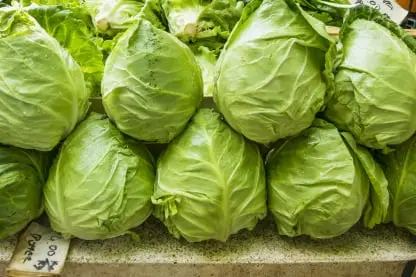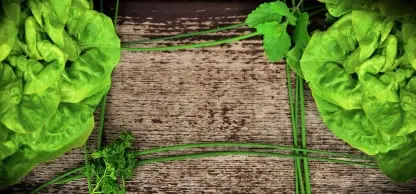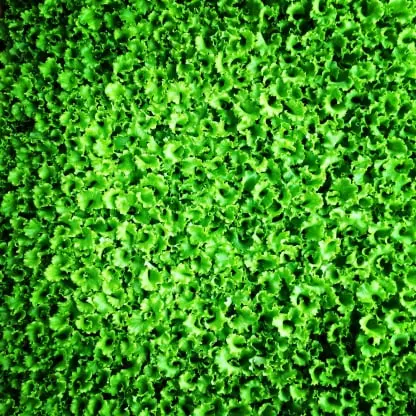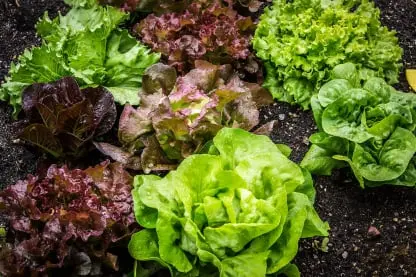Lettuce packaging app:
Lettuce packaging app: Lettuce Packing App to package lettuce for sale: Loose leaf lettuce packing app for salad packers, mixed salad, lettuce, lettuce mix and other leafy fresh produce packers.

Lettuce Packing App for accurate order filling & production
View Packing App Specifications.
Packing Lettuce & Loose Leaf vegetables:
Delicate Greens Require Special Treatment, packaging delicate vegetables such as lettuce or baby greens requires that additional care in weighing and processing in order to deliver the best product possible. In addition, hydroponic lettuce requires additional system design features to manage the larger and springier leaves compared to field-grown produce. 'Basil leaves' use Low Heat + Limited Contact: Ohlson Packaging’s lettuce packaging systems are designed to move the packaged lettuce very quickly through the vertical bagger, reducing any exposure to the heat produced by the machine itself. Additionally, the sealing process to form the bag itself can be controlled through the choice of film. Some films will be effectively sealed at lower heats, reducing any possible wilt in the bag. Modified atmosphere packaging is also important. We can recommend the right bags, clamshells, or other containers for your product.

Lettuce packing app manages food safety
The most classic system of pre-packaging is the use of a stretchable plastic film that adheres to the lettuce giving a very clean aspect; another option is micro-perforated polypropylene. The bags made of this material can be also used; the lettuces are packaged much quickly with this system. A widely spread method is the use of Flow Pack with loose lettuces or in covered trays. The units are placed in cardboard boxes of a unique height, although sometimes two or more levels are used. Inside the boxes, the lettuces are arranged in vertical position, one next to the others. There will only be one level in the case of " Iceberg" and " Trocadero’ lettuces, whereas the " Roman’ type is arranged horizontally, filling up to three levels. Baby lettuces are sometimes packaged in boxes or plastic baskets containing 2 to 4 units, weighing around 500g. In the last few years, other marketing systems like the ‘pre-cut’ lettuces have been created. The hearts are cut up, mixed and packaged together with other vegetables. This is carried out in controlled atmospheres, which helps to improve preservation.

Lettuce Packing App for reduced food & fresh produce waste
Innovative breeding technologies in lettuce for improved post-harvest quality
Societal awareness of healthy eating is increasing alongside the market for processed bagged salads, which remain as one of the strongest growing food sectors internationally, including most recently from indoor growing systems. Lettuce represents a significant proportion of this ready-to-eat salad market. However, such products typically have a short shelf life, with decay of post-harvest quality occurring through complex biochemical and physiological changes in leaves and resulting in spoilage, food waste and risks to health. We review the functional and quantitative genetic understanding of lettuce post-harvest quality, revealing that few findings have translated into improved cultivar development.
We identify (i) phytonutrient status (for enhanced antioxidant and vitamin status, aroma and flavour) (ii) leaf biophysical, cell wall and water relations traits (for longer shelf life) (iii) leaf surface traits (for enhanced food safety and reduced spoilage) and (iv) chlorophyll, other pigments and developmental senescence traits (for appearance and colour), as key targets for future post-harvest breeding. Lettuce is well-placed for rapid future exploitation to address postharvest quality traits with extensive genomic resources including the recent release of the lettuce genome and the development of innovative breeding technologies. Although technologies such as CRISPR/Cas genome editing are paving the way for accelerated crop improvement, other equally important resources available for lettuce include extensive germplasm collections, bi-parental mapping and wide populations with genotyping for genomic selection strategies and extensive multiomic datasets for candidate gene discovery. We discuss current progress towards post-harvest quality breeding for lettuce and how such resources may be utilised for future crop improvement.

Lettuce packing app manages supplier food quality and traceability
Anti-browning treatment for loose leaf lettuce packing:
The enzymatic browning of lettuce (Lactuca sativa L.) is a main cause of postharvest quality loss, and is controlled by the enzyme phenylalanine ammonia lyase (PAL). However, effective browning inhibitors that prevent lettuce butt discoloration have not been commercially developed, so the effects of such inhibitors on PAL are largely unknown. Here, we not only developed an anti-browning treatment, but also explored the mechanisms of the PAL-associated browning of Iceberg lettuce by profiling all homologs of PAL genes at transcript level. The anti-browning treatment used a combination of 0.25 M acetic acid and 200 mL L−1 ethanol and was able to repress enzymatic browning and microbial growth for two weeks. Notably, the lettuce butt discoloration in stem disks was repressed by 0.5 M acetic acid by inhibiting PAL activity, and this inhibition of PAL activity was also observed in vitro using a crude PAL enzyme extract from lettuce stems. To investigate the anti-browning mechanism at the transcriptional level, we identified and cloned six predicted LsPAL genes in the Lettuce Genome Resource, and further found that four of these (LsPAL1 to LsPAL4) were wound-inducible in the lettuce stem. Among these four wound-inducible LsPALs, LsPAL4 showed the highest wound-induced fold-change, suggesting that LsPAL4 has a key role in lettuce browning. Interestingly, wound-induction of LsPAL genes was dramatically downregulated by application of acetic acid. Taken together, acetic acid treatment of lettuce stems repressed butt discoloration by repressing PAL both enzymatically and transcriptionally, and ethanol provided complementary antimicrobial activity. A combination treatment with acetic acid and ethanol therefore has commercial potential in lettuce head processing.